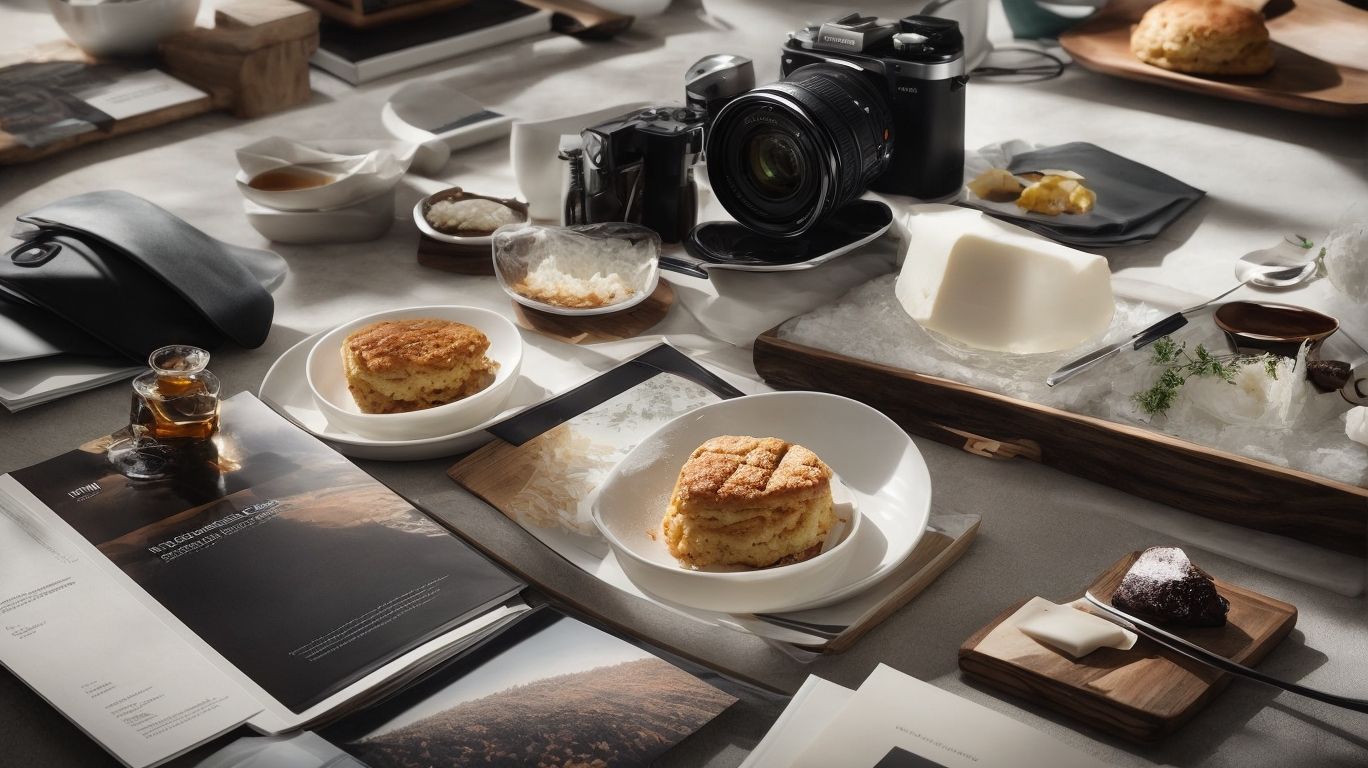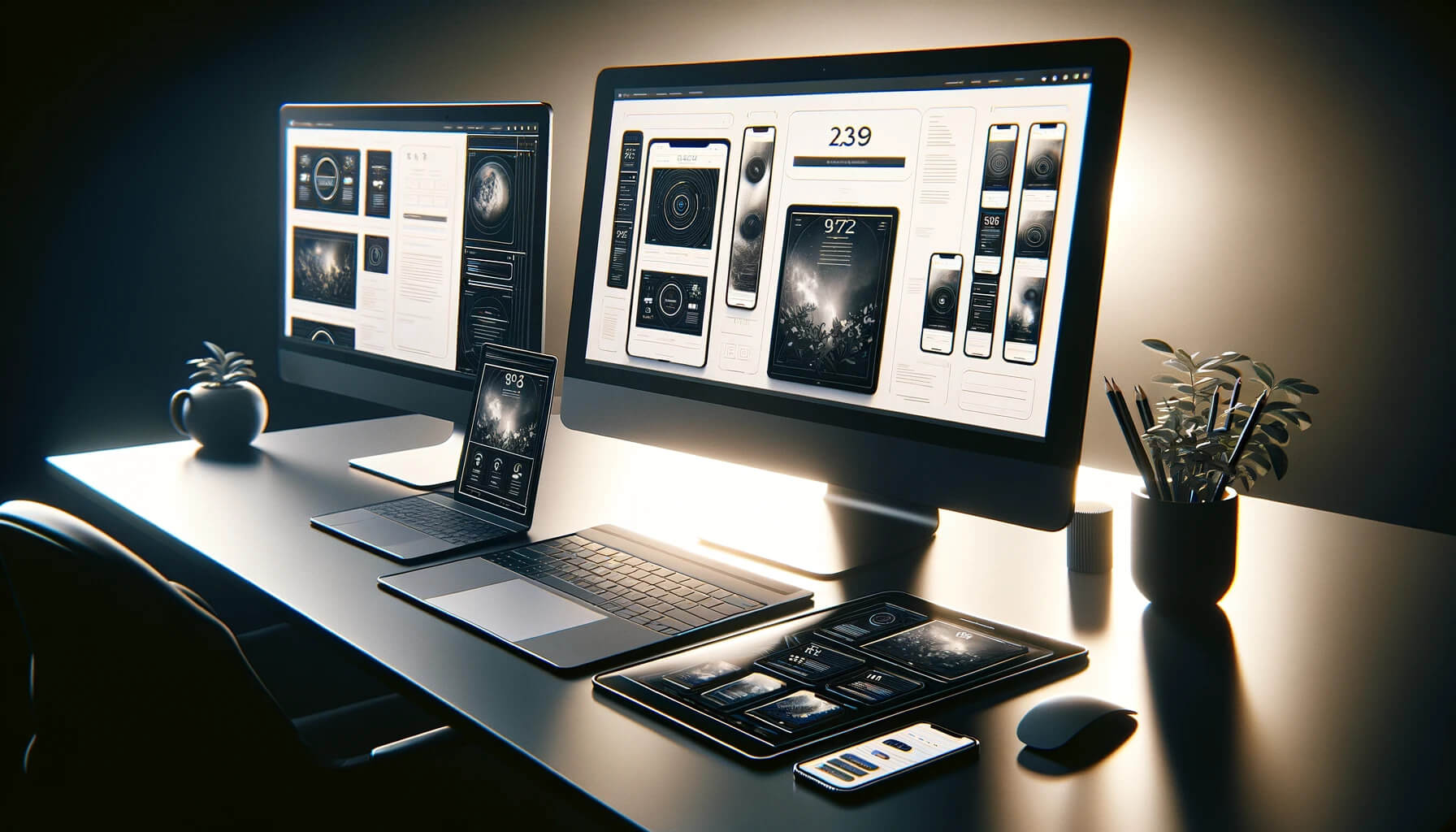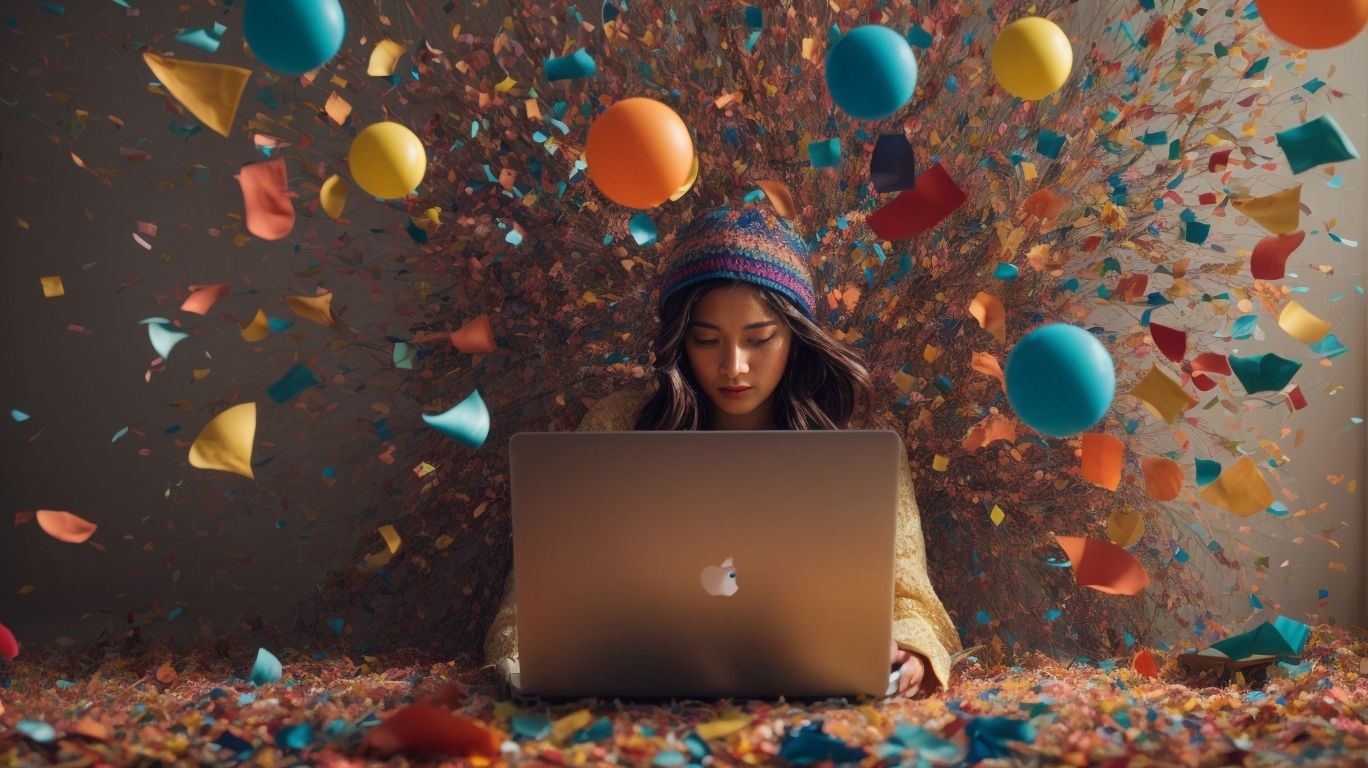Visual design is a crucial aspect of website development, as it has a significant impact on user engagement, brand perception, and overall effectiveness.
In this article, we will explore the importance of visual design for websites and its role in attracting and engaging users, communicating brand identity, enhancing user experience, and increasing credibility.
We will also delve into the elements of visual design, such as color, typography, layout, images, and graphics, and their impact on website effectiveness. We will provide examples of websites with effective visual design, including Apple, Nike, Airbnb, and Dropbox. If you want to understand how visual design can make or break a website, keep reading.
What Is Visual Design?
Visual design encompasses the arrangement and presentation of various graphic elements on a user interface, aiming to create aesthetic appeal and facilitate effective visual communication on websites.
Web design relies heavily on aesthetics to create a visually appealing and user-friendly website. The use of color, typography, images, and layout all play a role in establishing a brand identity and evoking emotional responses from users. These graphic elements work together to shape the overall look and feel of a website, ultimately influencing user experience and interactions.
Why Is Visual Design Important for Websites?
Visual design plays a pivotal role in shaping the user experience and engagement on websites, influencing brand identity, conversion rates, and user trust through effective visual hierarchy and optimized website performance.
Attracts and Engages Users
Visual design plays a pivotal role in attracting and engaging users by influencing their perception, behavior, and satisfaction through captivating aesthetics and targeted user psychology.
Visual design plays a crucial role in capturing user attention, evoking emotions, and guiding their interaction with a website or application. Designers can strategically use visual cues and elements, such as color psychology, typography, and layout, to shape the user experience, influence decision-making, and foster trust and credibility.
An intuitive and visually appealing design can greatly enhance user satisfaction, resulting in increased user retention and loyalty. Therefore, the impact of visual design goes beyond aesthetics, significantly shaping user engagement and behavior.
Communicates Brand Identity
Visual design serves as a medium for communicating and reinforcing brand identity through compelling visual storytelling and strategic integration of graphic elements within user interface elements.
By creating a cohesive visual language, brands can establish a strong connection with their target audience, evoking specific emotions and perceptions. Visual storytelling, through the use of images, colors, and typography, helps convey the brand’s narrative and values, shaping the audience’s perception.
Graphic design plays a crucial role in creating memorable brand assets, such as logos and marketing materials, that resonate with consumers. The user interface elements, including website design and app interfaces, also contribute to establishing a consistent and recognizable brand image. Together, these visual design elements work harmoniously to shape the overall brand identity and leave a lasting impression on consumers.
Enhances User Experience
Visual design enhances user experience by prioritizing user-centered design, conducting user interface optimization and testing, and ensuring visual appeal while maintaining usability.
This approach ensures that the design resonates with the target audience, providing a seamless and intuitive interaction.
By incorporating relevant visual elements, such as color schemes and typography, the design can evoke specific emotions and convey the brand’s identity.
Through iterative testing and feedback, designers can refine the visual elements to strike the perfect balance between aesthetics and functionality.
Ultimately, user-centered visual design aims to create meaningful, memorable experiences that keep users engaged and satisfied.
Increases Credibility
Visual design contributes to increased credibility by fostering user trust through consistent user interface patterns and best practices that prioritize visual coherence and user confidence.
When users encounter a well-designed interface that exhibits consistency in its layout, color scheme, and typography, they are more likely to perceive the brand or platform as reliable and trustworthy.
By following established design principles and standards, such as clear navigation and intuitive information hierarchy, visual design instills a sense of competence and professionalism.
This attention to detail and adherence to best practices not only enhances the overall user experience but also builds a foundation of credibility and trust, crucial for successful user engagement.
What Are the Elements of Visual Design?
The elements of visual design encompass the strategic integration of color schemes, typography, layout, and images and graphics to create a cohesive and visually appealing user interface.
Color
Color, as a fundamental element of visual design, influences user interface aesthetics and usability, shaping the overall visual appeal and functional aspects of the interface.
Color has a profound impact on the emotional and psychological perception of users, evoking specific moods and associations. The strategic use of color can guide users’ attention and differentiate between interactive elements, ultimately enhancing readability.
Moreover, color plays a pivotal role in branding and creating a cohesive identity for digital products. By understanding the psychological effects of different colors, designers can create visually appealing and functional interfaces that resonate with users on a profound level. This ultimately enriches the overall user experience.
Typography
Typography plays a crucial role in visual design, contributing to user interface accessibility and responsiveness, ensuring clear communication and adaptability across various devices and platforms.
Designers have the power to create a user-friendly interface by carefully choosing typefaces, font sizes, and spacing. These elements can evoke emotions and convey brand personality, ultimately impacting how users interact with a website or application.
With responsive typography, content is optimized for all screen sizes, from desktop monitors to mobile devices, resulting in an enhanced user experience.
Layout
The layout is a critical element of visual design, influencing user interface consistency, current trends, and best practices to ensure an intuitive and engaging user experience.
Layout plays a vital role in guiding users through a website or application. It creates a harmonious flow of information and interactions, enhancing user experience.
Consistent layout also helps in building familiarity and trust, making it easier for users to navigate and locate important elements. As the digital landscape evolves, staying updated with the latest layout trends and best practices is crucial for designers to create compelling and user-friendly interfaces.
A well-thought-out layout can significantly impact user perception and overall satisfaction with a product or service.
Images and Graphics
Images and graphics are pivotal in visual design, driving visual storytelling and enriching the user interface design process, contributing to compelling and immersive user experiences.
Images and graphics are powerful tools for evoking emotions and conveying complex ideas in a captivating manner. When strategically incorporated, they can establish a seamless flow in the user journey, guiding individuals through a website or app with ease.
Moreover, images and graphics play a crucial role in branding, eliciting strong associations and reinforcing the overall message of a product or service. They are more than mere decoration, as their impact deeply influences the way users interact with and perceive digital platforms.
How Does Visual Design Impact Website Effectiveness?
Visual design significantly impacts website effectiveness by optimizing navigation, enhancing user engagement, shaping brand perception, and contributing to search engine optimization (SEO) strategies.
Navigation and Ease of Use
Visual design optimizes website navigation and enhances ease of use by integrating effective website functionality and considering user navigation patterns throughout the user journey within the user interface design.
This includes the strategic placement of menus, buttons, and visual cues to guide users seamlessly through the website. By incorporating intuitive visual hierarchies, such as clear labeling and contrasting colors, users can quickly identify and engage with interactive elements.
Visual design influences the overall user experience by creating a visually appealing interface that encourages prolonged user engagement. Through thoughtful consideration of visual elements, a website can become more user-friendly and reinforce its brand identity.
User Engagement and Conversion
Visual design enhances user engagement and facilitates conversion by leveraging user interface optimization and testing to create compelling and effective user interactions that drive conversion rates.
Visual elements, such as color, typography, and layout, play a crucial role in capturing user attention and guiding them towards desired actions. With the addition of intuitive navigation and responsive design, user experience is further improved, promoting interaction.
A/B testing on various design variations allows for data-driven decisions to refine the user interface and enhance conversion effectiveness. When these elements are harmoniously combined, visual design becomes a powerful tool in influencing user behavior and boosting conversion rates.
Brand Perception and Recognition
Visual design shapes brand perception and recognition through the strategic integration of brand identity elements, consistent user interface aesthetics, and the use of recognizable interface patterns.
This integration creates a cohesive and memorable visual experience for the audience, strengthening the association between the brand and its visual presence.
By utilizing a consistent color palette, typography, and imagery, visual design communicates the brand’s values and personality, evoking specific emotions and responses from users.
Recognizable interface patterns, such as navigation structures and interactive elements, enhance usability and establish a sense of familiarity, further reinforcing brand recognition.
The visual design plays a crucial role in how a brand is perceived and remembered in the minds of consumers.
Search Engine Optimization (SEO)
Visual design contributes to search engine optimization (SEO) by considering website performance and implementing effective user interface design strategies and techniques that enhance visibility and relevance for search engines.
This involves creating visually appealing and easy-to-navigate websites, which can improve user experience and encourage longer page visits, ultimately reducing bounce rates.
Utilizing relevant keywords in image alt text, meta tags, and captions can significantly improve a site’s visibility in search results. Design elements such as color schemes, typography, and image placement also play a crucial role in engaging users and maintaining their interest, thus positively impacting SEO efforts.
What Are Some Examples of Effective Visual Design on Websites?
Not provided as it’s a list of examples.
Apple
Apple’s website exemplifies effective visual design principles, showcasing a seamless integration of user interface design and best practices to deliver a compelling user experience.
The utilization of consistent branding elements, intuitive navigation, and visually appealing layout contributes to the overall cohesiveness of the site.
As users navigate through the website, they encounter a harmonious blend of imagery, typography, and color schemes that align with Apple’s established brand identity.
The strategic use of white space enhances readability and directs focus, while the responsive design ensures a seamless experience across various devices.
Interactive elements and animations provide an engaging and interactive journey for visitors, further enhancing the user experience.
Nike
Nike’s website presents a striking blend of visual design, incorporating captivating user interface aesthetics, current trends, and a seamless design process for an engaging user experience.
The use of bold imagery and dynamic layout draws users into an immersive digital environment, reflecting the brand’s commitment to innovation and creativity.
The integration of interactive features and smooth navigation enhances user engagement, providing a seamless journey through products and storytelling. The attention to detail in typography, color schemes, and multimedia elements further elevates the overall visual appeal, creating a cohesive and visually stimulating platform.
Airbnb
Airbnb’s visual design showcases strategic user interface optimization, utilization of effective design tools, and the implementation of design frameworks to deliver a seamless and immersive user experience.
The website’s use of visual hierarchy, intuitive navigation, and responsive layouts contributes to a user-friendly interface. By incorporating high-quality imagery, clear typography, and consistent branding, Airbnb creates a visually engaging platform.
The implementation of design tools such as Sketch and Adobe Creative Suite enables the creation of compelling visuals. The use of frameworks like Material Design aids in creating a cohesive and intuitive experience across different devices.
Dropbox
Dropbox’s visual design exemplifies effective user interface design strategies, utilization of advanced design techniques, and adherence to current design trends, contributing to a compelling and innovative user experience.
The website’s minimalist and intuitive layout allows for seamless navigation and accessibility, while its use of high-quality imagery and interactive elements enhances user engagement. The incorporation of responsive design ensures an optimized experience across various devices, while the strategic use of whitespace and bold typography creates a visually appealing and modern aesthetic.
Dropbox’s design embraces current industry trends such as dark mode options and accessibility features, showcasing its commitment to staying at the forefront of digital design.
Frequently Asked Questions
What is the impact of visual design on website effectiveness?
Visual design plays a crucial role in the effectiveness of a website. It refers to the overall aesthetic appeal and user experience of a website, including its layout, color scheme, graphics, and other visual elements.
How does visual design affect user engagement on a website?
The visual design of a website can greatly impact user engagement. A well-designed website with appealing visuals can attract and retain users’ attention, leading to longer site visits and increased interaction with the content.
Can the visual design of a website affect its conversion rate?
Yes, the visual design of a website can have a significant impact on its conversion rate. A visually appealing website can help establish trust and credibility with users, making them more likely to take desired actions, such as making a purchase or filling out a form.
How does visual design contribute to the overall user experience?
Visual design is an essential component of the user experience on a website. It can help users navigate the site more easily, find information quickly, and have an enjoyable and memorable experience, leading to higher satisfaction levels.
What are some key elements of effective visual design for a website?
Effective visual design for a website should include a clean and organized layout, consistent branding and color scheme, easy-to-read typography, and appropriate use of images and graphics that enhance the overall message and purpose of the site.
How can a website improve its visual design for better effectiveness?
To improve the visual design of a website, it is important to conduct user research and gather feedback to understand what elements are working well and what can be improved. Designers can also stay up-to-date with current design trends and continuously test and make adjustments to optimize the overall effectiveness of the website.






